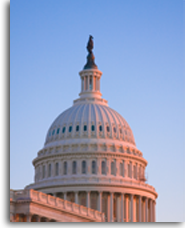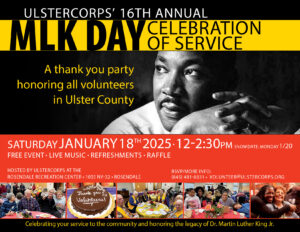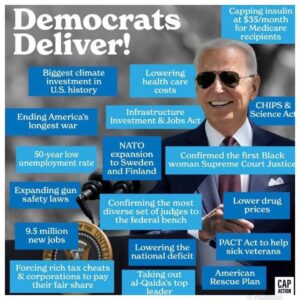As a longtime Georgian and longtime observer of the 39th president, I wrote an obituary of the remarkable Jimmy Carter for New York:
Jimmy Carter was America’s oldest ex-president and had by far the longest former presidency. Indeed, his remarkable life — which ended today after 100 years — can be divided into the stretches before (38 years) and after (43 years) he held public office, with a comparatively short stretch of public service (four in the Georgia state senate, four as governor, and four as president, plus a couple of stints of campaigning) between those two eras. While his ascent to the presidency was in many respects astonishing, his record as a politician was at best mixed: He won one statewide political contest in Georgia and lost one, then won one presidential election and lost one. Assessments of his presidency never quite turned positive in hindsight, and for many years he continued to hold controversial positions on the ultimate hot-button international concern, the Middle East. Most recently, the return of inflation in the early 2020s brought back memories of one of the more painful aspects of his administration’s record.
Yet the man always known by the informal name of Jimmy became and remained a beloved figure in his postpresidency, owing in no small part to his dogged efforts to combat such basic scourges of the human condition as war, disease, political corruption, and homelessness.
Carter was born in 1924 on a large family peanut farm near the hamlet of Plains in southwestern Georgia, the son of an experienced farmer and entrepreneur, Earl, and a trained nurse, Lillian, the remarkable woman who eventually found fame by joining the Peace Corps at age 68 as her son ran for governor. He helped in his family’s agricultural and commercial ventures while growing up. (One, which he was later to revive and expand, was wine-making, unusual for rural Baptists at the time.) Though a dutiful son of the land, Carter longed for travel, and after some preliminary higher education, he gained admission to the U.S. Naval Academy in 1943, graduating in the top 10 percent of his class in 1946, shortly after World War II ended. Around the same time, he married Rosalynn Smith, a friend of his sister’s from Plains, and the couple soon began a family that ultimately included three sons and a daughter.
Carter was well embarked on a naval career (notably serving on the research staff of Hyman Rickover, the “father of the nuclear Navy,” whose hands-on taskmaster management style made a deep impression on the young officer) when his father was diagnosed with pancreatic cancer, leading Carter to secure a discharge and return to Plains to take over the family farm and businesses. By the end of the 1950s, he was both prosperous and restless, and he became involved in civic and political life. He entered politics at the larger tail end of Jim Crow, when it didn’t take much to get a reputation as a relative liberal on racial matters. Carter quietly qualified by supporting the desegregation of his own Southern Baptist congregation and refusing to join the militantly racist White Citizens’ Council movement when it reached his county. By the time he got to the state senate in 1962 (a judicial intervention aimed at a rival’s fraud forced a second election), he was known as a strong supporter of President John F. Kennedy.
But in Carter’s initial and subsequent campaigns prior to his election as governor, he was hardly a profile in courage on racial matters. In his first gubernatorial bid, in 1966, he cleverly positioned himself between the self-described liberal ex-governor Ellis Arnall and the notorious segregationist Lester Maddox. (I was a kiddie volunteer for that first statewide Carter campaign.) He narrowly missed making a Democratic runoff against Arnall mostly because of Republican crossover votes for Maddox, who was deemed the Democrat that GOP nominee Bo Callaway could most easily defeat. When write-in votes for Arnall forced the election into the legislature under Georgia’s archaic and poorly written Constitution, Carter joined most (but not all) Democrats in casting a party-line vote for the buffoonish racist Maddox. I was shocked to hear my hero’s voice clearly announcing a vote for “Lester G. Maddox” on the live radio broadcast of the balloting, and I did not support his subsequent gubernatorial effort.
Carter barely stopped running between 1966 and 1970, and he confirmed his twin reputations for cautious ambivalence on racial issues and impressive (if cynical) political skills. This time, his principal opponent was former governor Carl Sanders, who had earned the loyalty of Black voters during a relatively enlightened first term. While Carter was quietly wooing some of the same Black civil-rights leaders who would later spearhead his presidential run, his public campaign focused on a populist appeal to white rural and small-town voters who disliked “Cufflinks Carl” for his corporate ties and his racial moderation. Most notoriously, Carter supporters widely distributed photos of Sanders celebrating a victory with Black players from the Atlanta Hawks, the NBA team he partially owned. Carter also went out of his way to express solidarity with Alabama’s George Wallace, who was running an overtly racist campaign in 1970 to recapture power in Montgomery. Carter consolidated conservative white voters and nearly won a majority against Sanders in the first round of primaries, then dispatched the former governor handily in a runoff.
But upon taking office (after a pro forma general-election victory over Republican TV newsman Hal Suit), Carter engineered a sharp left turn on racial issues, making this blunt statement in his 1971 inaugural address:
“I say to you quite frankly that the time for racial discrimination is over … No poor, rural, weak, or Black person should ever have to bear the additional burden of being deprived of the opportunity of an education, a job, or simple justice.”
Thanks to his reputation for quiet decency on racial matters and the strength of his outreach to civil-rights leaders, his campaign demagoguery, not this new departure, was widely viewed as tactical and disposable.
While racially enlightened, Carter’s governorship (limited at the time to a single term) was to a significant extent focused on the dry process issue of government reorganization. He successfully proposed to consolidate 300 state agencies into 22. He made small but politically significant gestures in areas ranging from the equalization of public-education revenues to prison reform and environmental protection.
Meanwhile, like most southern (and not a few northern) politicians in both parties, Carter opposed busing to achieve school desegregation. He nonetheless kept himself in the national political news as an exemplar of “New South” Democratic governors (whose ranks included Dale Bumpers of Arkansas, Reubin Askew of Florida, and John West of South Carolina) who were outmaneuvering the old segregationists of their own party while heading off Republican gains in the region that threatened Democrats’ national viability. They were the first truly “national” Democrats in the South since the party had fully abandoned its ancient willingness to support, or at least tolerate, Jim Crow.
Carter’s astonishing rise to the presidency just two years after a meh single term as governor of a Deep South state was a testament to both his unique positioning in a Democratic Party struggling with realignment and the political skills he and his advisers often showed even as they were being mocked as backwoods rubes. Team Carter exploited the emergence of the Iowa caucuses as a pre–New Hampshire nominating contest and out-organized the field there. He then took advantage of national Democrats’ desire for someone to end the threat of Wallace’s presidential candidacy by securing support for one-on-one contests with the Alabaman in the South, which Carter won with the regionally resonant slogan “Don’t send them a message. Send them a president.” He used crucial support from the Atlanta-based King-family network of civil-rights stalwarts to head off attacks on his dubious background on racial matters and turned criticism of his lack of experience into an asset among voters still furious at Watergate-era Washington. Even his Baptist piety became a selling point among both Evangelicals (who had not yet begun their mass exodus to the GOP) and voters inclined to believe his “I’ll never tell you a lie” pledge.
But it was in the general-election contest against Gerald Ford that Carter’s unique regional political appeal became crucial, as I explained in a meditation on the 2020 revival of the southern Democratic Party:
“[Carter] defeated Wallace in most southern primaries and then gained his endorsement, subsequently putting together a mind-bending coalition of Black and conservative white voters united by regional pride (between Andrew and Lyndon Johnson, no president was elected from a state that had been part of the Confederacy). Carter won every state of the former Confederacy (producing huge swings compared with Hubert Humphrey’s performance in 1968 and George McGovern’s in 1972) except Virginia; he won the border states of Delaware, Kentucky, and Missouri as well as southern-inflected areas of Ohio and Pennsylvania that helped keep those states in the Democratic column.”
It is unlikely that any other Democrat could have won the presidency in 1976, and Carter won by an eyelash. Yet like other regional or ethnic-racial pioneers, his peak of support among the home folks was a thing of the past once he took office. Thus began a troubled four years.
Carter’s one-term presidency had its ups and downs and was rarely stable or predictable. Yes, he inherited a lot of economic trouble from the Nixon and Ford administrations, but his response to double-digit inflation (involving some austerity measures and a lot of austerity talk) divided Democrats, particularly when the Carter administration deprioritized full employment and put in place a Federal Reserve Board chairman (Paul Volcker) determined to use a tight monetary policy to tame inflation, triggering a recession.
This economic turbulence and a closely associated energy crisis (both kicked off by the Arab oil boycott of 1973–74 and a subsequent huge price spike in petroleum products) led Carter to indulge his inner Baptist deacon and sternly lecture Americans about the need for belt-tightening and self-discipline. For one famous week in 1979, he holed up at Camp David summoning advisers and elected officials in preparation for what was later known as the “malaise speech” (though he did not use that term). He struggled regularly with congressional Democrats, who joined with Republicans in sufficient numbers to kill his proposals for a stepped-up federal consumer-protection effort, standby gas-rationing powers, and canceling major water projects he deemed unnecessary. As he had in Georgia, Carter emphasized government-reorganization schemes and did succeed in creating new Cabinet-level Departments of Education and Energy.
But foreign policy was an unusually large focus for Carter as president, leading to some of his biggest triumphs and setbacks. He invested enormous amounts of capital and personal time into engineering the 1978 Camp David Accords, the landmark Israeli-Egyptian peace agreement signed by Menachem Begin and Anwar Sadat. (It has, extraordinarily, held for more than four decades.) Earlier that year, after a long, tense negotiation, he secured Senate ratification of a treaty to relinquish the Panama Canal to Panama. Beyond establishing any individual bilateral relationships, Carter introduced human rights as a key consideration in U.S. foreign and defense policy, modifying the strict anti-Communist priorities of his immediate predecessors.
Carter’s interactions with Iran characterized the ambiguities of his presidency, helping him beat Ted Kennedy in the 1980 Democratic primaries but putting an exclamation point on his general-election defeat.
Kennedy had been leading Carter two-to-one in primary polls in mid-1979 when the Massachusetts senator all but decided to run; Carter’s combative streak was engaged, and he went out of his way to tell journalists that if Kennedy ran, “I’ll whip his ass.” But a few days before Kennedy’s official announcement, Iranian student revolutionaries took 66 Americans hostage in Tehran in response to Carter’s decision — against the caution of his advisers — to let the deposed Shah of Iran into the U.S. for cancer treatment. The hostage-taking launched a simmering crisis that did not end until the last day of Carter’s presidency. The international emergency did bolster the incumbent’s public standing, particularly among Democrats, and Carter’s “Rose Garden strategy” of running for renomination without holding personal campaign events worked, at least initially. He won 14 of the first 15 caucuses and primaries (losing only Massachusetts), in part by rebuilding his biracial coalition of support in southern and southern-inflected states.
Kennedy made a comeback in the later primaries, and voters grew tired of the hostage crisis (particularly after a rescue attempt went bad in April) and the country’s chronic economic problems. Kennedy won New York, Pennsylvania, California, and New Jersey, but it wasn’t enough to defeat the incumbent. Still, he didn’t concede until the convention and managed to avoid the traditional arms-raised unity gesture with Carter as the proceedings ended.
Carter had his moments in the general-election contest with Republican Ronald Reagan (and his low points, as when he briefly slipped behind independent candidate John Anderson in the polls), managing to keep the race competitive until late in the campaign despite an assortment of ongoing crises in domestic and foreign policy. There were persistent rumors then and later (and recently, spurred by Carter’s transition to end-of-life care, a confession from an associate of Republican power broker John Connally) of Republican efforts to talk the Iranian regime out of a hostage release prior to the election, but the outcome was probably sealed in any event.
In their one debate, Reagan famously called for voters to make the election a referendum on “the last four years,” and right at the end of the race, Carter’s numbers collapsed. Reagan won by nearly ten points, carrying 44 states.
Although he left office at only 55, Carter never gave a thought to running again. His vice-president, Walter Mondale, won the 1984 Democratic presidential nomination but lost 49 states in the general election, which proved the country was undergoing a partisan realignment. Carter’s strength in the South had masked it earlier, keeping Democratic losses from being much worse. But Carter didn’t brood about his difficulties as president and embraced a simple if robust postpresidential agenda that kept him in good stead for over four decades.
His principal vehicle was the Carter Center, a nonprofit organization created in 1982 in partnership with Atlanta’s Emory University; he and Rosalynn Carter served as co-founders. Its three main international programs have centered on conflict resolution (in areas ranging from North Korea–U.S. nuclear cooperation, to the restoration of democracy in Haiti, to disputes between Sudan and Uganda and between Colombia and Ecuador), election monitoring (in 39 countries), and health initiatives. The center has led efforts to eradicate deadly diseases like Guinea worm and to help diagnose and treat others like river blindness and trachoma. It has also fought to reduce the stigma of mental illness in the U.S. and beyond. In 2002, Carter was awarded the Nobel Peace Prize for the Carter Center’s efforts to “find peaceful solutions to international conflicts, to advance democracy and human rights, and to promote economic and social development.” He also continued his work for Middle East peace, leading to the one big controversy surrounding his postpresidential years: allegations that he was hostile to Zionism and to Israel itself, which grew stronger with the publication of his 2006 book, Palestine: Peace Not Apartheid.
Another postpresidential commitment of Carter’s (and Rosalynn’s) involved Habitat for Humanity, a Georgia-based NGO that had long been doing modest work to build housing for the homeless. The Carters began working with Habitat in 1984 and over the years helped it expand its programs to all 50 states and to 70 countries. We’ve all seen those celebrated photographs of Carter framing up walls. During the 1992 presidential campaign, I was having dinner at the Atlanta political hangout Manuel’s Tavern, and I asked a waiter about all the security loitering around a back room. “Jimmy’s back there showing Clinton and Gore how to drive a nail,” the waiter replied; sure enough, the next day, the three men held a Habitat event nearby and nary a nail was missed.
Yet the nongovernmental entity to which Carter devoted the most years was probably the Baptist Church. He taught Sunday school off and on at the Maranatha Baptist Church in Plains from its founding in 1977 as a church that welcomed Black worshippers. As the Southern Baptist Convention became militantly conservative in the 1980s and ’90s, Carter eventually broke any identification with the SBC (especially objecting to its refusal to ordain women as ministers) and became a leader of the moderate spinoff group the Cooperative Baptist Fellowship.
Carter’s legacy as a president and a politician is substantial but not entirely settled. He was prescient in a number of policy areas, notably the search for a comprehensive energy strategy and his strong stance on human rights as a touchstone of U.S. foreign policy. He was also a personal diplomat of great courage and skill. From a political perspective, he was the key bridge figure between the Jim Crow era of southern politics and the biracial Democratic coalitions that followed; the Democratic victories in Georgia in 2020 — including the election of a Black U.S. senator — must have gratified him immensely. But Carter also exemplified centrist and even conservative strains in the Democratic Party that persisted while white Democratic racist politics largely vanished.
What made Carter’s postpresidential career so popular, however, was the simple sense, shared far beyond his own region or party, that he was a fundamentally good man who eschewed riches and power for a more humble path to righteousness.








